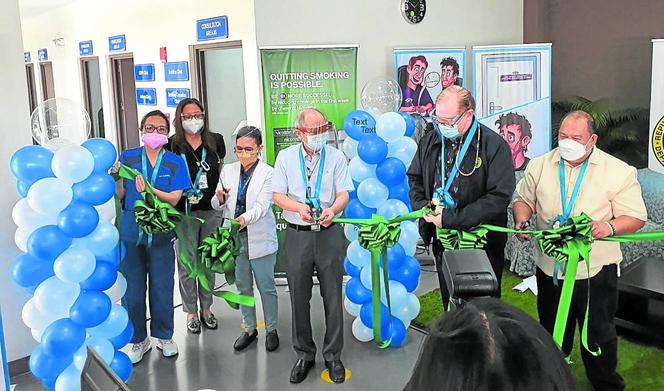Introduction
Itisalsocalledvisitor-centeredtherapyandclient-centeredtherapy.
Itwasfoundedinthe1950sand60sbyCarlRogers(1902-1987).Themainpointsareasfollows:
1.Peoplehavetheabilitytodiscovertheirownflawsandshortcomings,andtoImprovement,sothepurposeofpsychologicalcounselingisnottomanipulatetheindividual’sexternalenvironmentorhispassivepersonality,buttoassisttheinquirertointrospectandunderstandhimself,togivefullplaytohispotential,andultimatelytoachieveself-realization.
2.Peoplehavetwoselves:theactualselfandtheidealself.Theformeristhesenseofselfobtainedbytheindividualinreallife,whilethelatteristheindividual’sperceptionof"shouldbe"or"mustbe".Waitforself-concept.Theconflictbetweenthetwocausedpeople'spsychologicaldisorders.Themoreaffirmationapersongetsincommunication,thelessself-conflictandthemorenormalhispersonalitydevelopment.
3.Thistherapyemphasizestheestablishmentofatherapeuticconsultingrelationship,withsincerity,respectandunderstandingasitsbasicconditions.Rogersbelievesthatwhenthisrelationshipexists,theindividual'streatmentoftheselfwilltakeeffect,andpositivechangesinitsbehaviorandpersonalitywillfollow.Therefore,psychologicalcounselorsshouldestablisharelationshipofequalityandmutualrespectwiththeinquirers.Inthisway,theinquirercanbeinanactivepositionandlearntomakeindependentdecisions.
4.Intermsofoperatingskills,thistherapyopposesmanipulationordominanceoftheinquirer,advocatesnon-accusation,non-commentary,andnon-interferenceintheconversation,andencouragestheinquirertodowhathewants.Expressyouropinionsdirectlytocreateanatmospherefullofsincerity,warmthandtrust,sothattheinquirercanopenupwithcarefreeandcarefree.
Inhisprofessionalcareer,Rogershasalwaysadvocatedthattherapistsshouldpossessthreecharacteristicstocreateagrowth-promotingatmosphereinwhichindividualscanmoveforwardandachievewhattheycanbe.Thesecharacteristicsare:1.Consistency:includingsincerityortruthfulness.2.Unconditionallypositivecare:includingacceptanceandcare.3.Accurateunderstandingofempathy:theabilitytopenetrateintothesubjectiveworldofothersandunderstandtheirfeelings.AccordingtoRogers,ifhelperscanhavetheseattitudes,thosewhoreceivehelpwillbelessdefensiveandmoreopentothemselvesandtheirworld,andtheywillbehaveharmoniouslyandconstructively.Thisbasicdriveforrealizationmeansthatifthewholedirectionisguidinghiminahealthydirection,theywillgodownnaturally.Therefore,thegoalofconsultationistofreethepartiesandcreatesituationsinwhichtheycancarryoutmeaningfulself-exploration:whenpeoplearefree,theycanfindtheirowndirection.
Rogersdoesnotregardtheclient-centeredtreatmentasatreatmentthathasbeenfinalizedandcompleted.Heexpectspeopletoregardhistheoryasasetofexperimentalprinciplesdevelopedinthecourseoftreatment,notasdogma.Themainpointsareasfollows:
Theclient-centeredtreatmentmethodfocusesontheresponsibilitiesandabilitiesoftheclientinordertofindamorerealisticmethod.Thepersonwhoknowshimselfbestisthepersonwhocanfindmoresuitablebehaviorsforhimselfonthebasisofincreasingself-awareness.Theclient-centeredapproachemphasizesthephenomenologicalworldoftheclient.Inordertograsptheclient’sinnerframeofreference,thetherapistputsmostofhisfocusontheclient’sperceptionofhimselfandtheworldaroundhim.
Accordingtotheclient-centeredapproach,psychotherapyisanexampleofconstructiveinterpersonalrelationships.Throughtherelationshipwithotherpeople,thepartieswillalsoexperienceotherpsychologicalgrowth,aslongasthesepeoplecanhelpthemdothingsthattheycan'tdoalone;inotherwords,upholdconsistency(appearancesandexpressionsareconsistentwithinnerfeelingsandideas)Counselorswhoare,accepting,andempatheticcanhelptheclientmakechangesintreatment.Theclient-centeredtherapytheorybelievesthatthefunctionofthetherapististhatheisrightinfrontoftheclient,iseasytogettheclientclose,andemphasizestheexperienceatthetime.
Thetreatmentprocess
Thetreatmentpurposeoftheclient-centeredtreatmentmethodisdifferentfromthetraditionalmethod.Thepurposeofclient-centeredtherapyistohelpindividualsbecomemoreindependentandintegrated.Itfocusesonthepersonitself,notonthelong-standingproblems.Rogers(1977)believesthatthepurposeoftreatmentisnotonlytosolvetheproblem,butalsotoassisttheclienttogrow,sothattheycanbetterovercomethecurrentandfutureproblemstheywillface.
Inthecourseoftreatment,whatkindofpersonemergesfrombehindthefalsehood?Rogers(1961)believesthatheshouldbeapersonwhoisconstantlyrealizingand:1.Anattitudeofopennesstoexperience.2.Self-trust.3.Thereareevaluationstandardsintheheart.4.Happytocontinuetogrow.Encouragingtheclienttodevelopthesecharacteristicsisthegoalofclient-centeredtherapy.
Thebiggestfeatureofthistherapymaybethatitisajointexpedition.Inthisexpedition,boththeconsultantandtheclientrevealtheirhumanityandpursuegrowthexperiencetogether.Duringtheexpedition,thecounseloractsasaguidebecauseheisusuallymoreexperiencedandpsychologicallymature.However,itmustbeunderstoodthatatherapeuticrelationshipinvolvestwopeople,andbothpeoplemakemistakes.Becauseofthis,Rogersadoptsanon-directiveattitudetowardstheclient.Bothofthemcanbenefitfromhardwork,buttheyalsohavetheirboundaries.Inaddition,itisanunrealisticideatoexpectanyconsultanttobetrue,caring,andacceptabletoallpartiesatalltimes.Whenthecounselorisunabletobetruthful,caring,andaccepting,accepthisowninnerexperience.Ifnecessary,considerreferringthepersontoanothercounselor.
IntroductiontoClient-CenteredTherapyandRogers
Client-Centeredtherapyisthemainrepresentativeofhumanisticpsychotherapy.Humanisticpsychotherapyisanewtypeofpsychotherapythatemergedinthe1960s.ItsguidingideologyisthehumanisticpsychologythatemergedintheUnitedStatesafterWorldWarII.Thistherapywasnotcreatedbyanoutstandingleaderofacertainschool,butwaspracticedbysomepeoplewiththesameviewpoint,includingpatient-centeredtherapy,existentialtherapy,andGestalttherapy.Amongthevariousschoolsofhumanistictherapy,theclient-centeredtherapyinitiatedbyRogers(CRRoners)hasthegreatestimpactandisamajorrepresentativeofhumanistictherapy.ConsultationCenterTherapybelievesthatundernormalcircumstances,anypersonhasunlimitedgrowthpotentialthatispositive,hard-working,andself-affirming.Ifone'sownexperienceisblocked,ortheconsistencyofone'sownexperienceislost,suppressed,orconflictoccurs,whichweakensorhindersone'sgrowthpotential,itwillbemanifestedasmentalillnessanddifficultyinadapting.Ifagoodenvironmentiscreatedsothathecancommunicateandcommunicatewithothersnormally,hecanrealizehispotentialandchangehismaladaptivebehavior.
Asearlyas1939,heputforwardanunusualidea:"IfIdon’tthinkaboutshowingmyintelligence,thenIthinkit’sbettertorelyontheclienttocompletethetreatmentprocess...,Thevisitorunderstandshisproblems,whatdirectionheshouldworktowards,whatproblemsaremostimportant,andwhatexperienceshehides."Hesummeduphisexperienceinpsychotherapypracticeandpublished"CounselingandPsychotherapy"in1942."",putforwardhisownnewviewofpsychotherapy.In1951,hepublished"ConsultantCenterTreatment",whichlaidatheoreticalfoundationforpatient-centeredtreatment.
Rogers’experience
Indecadesofpracticalwork,RogershasgainedalotofknowledgeandaccumulatedalotofExperience.Inshort,therearethefollowingpoints:
(1)Hefoundthatintheprocessofgettingalongwithothers,hecouldnotpretendtobefakeforalongtime.Forexample:Whenyouaresick,youcannotpretendtobeanormalperson.
(2)Whenheadmitsthatheisimperfectandacceptsthetruefeelingsofothers,hecanchangeandgetalongwithothersmoreeffectively.
(3)Thedeepertheunderstandingofothers,themoretherelationshipbetweenoneselfandtheunderstoodpersonwillchange.Rogerssaidthathelearnedwaystoimprovehimselffromunderstandingthevariousexperiencesofpatients,makinghimselfamoreresponsibleperson.
(4)Usehisattitudetocreateasaferelationshipandanatmosphereoffreedom,whichcanreducetheestrangementbetweenothers,sothattheycanopentheirinnerworldtoeachother.
(5)Beingabletoacceptotherpeople’sfeelingsandattitudes,includingangryfeelingsandhatredattitudes,canhelpothersgrow,becausethisishisrealandvitalpart.

(6)Heisnoteagertoaskotherstodowhathewants.Thatisnottoshapeothers,themoreso,themoreyouwillfindthatyouandothersaregrowingandchanging.
(7)Youshouldtrustyourownexperience.Whatothersappraiseisnotnecessarilyusefultoyou,onlyyouknowyourselfbest.Forexample:Rogersisnotadoctorbutheisdoingpsychotherapy.Therearepeoplewhocriticizeandencouragehim,soyoucanleaveitalone.
(8)Experienceisthehighestauthority.RogersbelievesthatnomatterwhetheritistheBibleorprophecy,whetheritisFreudiantheoryorothertheories,whetheritisGod'srevelationorhumanguidance,noneofthemcansurpasshisowndirectexperience.
(9)Similarly,weshouldrealizethatfactsaretruefriends.
(10)Experiencehasprovedthat:peoplehaveabasic,mature,constructive,self-realizationandsocializationpotential.Iftheycanunderstandthefeelingsofothersandrecognizethattheyhavetheirownpowerasindependentpeople,themorefullyunderstood,themoretheywillbeabletogiveuptheirpreviousmasksofdealingwithlifeandmoveforward.
(11)Lifeisaprocessofflowandchange,inwhichtherearenofixedthings(includingbeliefs),andothersshouldbeallowedtodeveloptheirowninnerfreedomandmakesenseoftheirownlifeexperienceexplanationof.Rogershasinfiltratedtheselifeexperiencesandpracticalexperiencesintothetheoryandpracticeofhisclient-centeredtherapy.
Differentfromotherpsychotherapy
(1)Itbreakstheboundariesofpreviousdiseasediagnosis.Diseasediagnosisanddifferentialdiagnosisarenotperformed.Someneurologicalpatientsandnormalpeople,andevenmentalpatientsaretreatedasclients,becausetheyarenotcalledpatients.
(2)Onlyfocusonthetreatmentenvironmentandatmosphere,notontreatmentskills.Rogerssaidthatthe"heart-cutting"techniqueofpsychoanalysisisuseless,andthebehaviormodificationmethodistoo"mechanical"andloseshumanity.Hecriticizedtheformerpsychologicalhealersforimposingtheirownjudgmentsandvaluesonothers,askingthemtoacceptthemunconditionally,andpreventingthepatientsfromrealizingtheirpotential.
(3)Contemptfortheroleofexperts.Criticizetheparent-childrelationshipbetweendoctorsandpatientsinpsychoanalysisandtheteacher-studentrelationshipinbehavioraltherapy,andadvocatethattheadministershouldnotappearasadoctororexpert,treatclientswithanequalattitude,andgivenospecificguidanceAndanalysis,guidethemtoexpresstheiremotions.
Rogers’psychopathologicalviewsandtreatmentsteps
Rogersbelievesthatorganismshaveabasicinherenttendencytousetheirpotentialcapabilitiesinvariouswaystopromoteorganisms.Growth,progressandmaturity.Forexample,atoddlerlearnstowalk.Undernormalcircumstances,nomatterhowmanytimesachildfalls,hecanalwayslearntowalkaloneintheend,andthesameistrueforpsychologicalgrowth.Inareasonableandgoodenvironment,apersoncanalwaysrelyonthisinnatestrengthtogrowandmaturefromsmalltolarge,andbecomeasoundandfunctionalperson.Inthegrowthofpeople,unfavorableenvironmentalconditionsmakepeople’sThistrendisdistortedandhindered,andconflictsareformed,andpeoplewillfinditdifficulttoadapt,manifestedinvariousperverseandweirdbehaviors.Rogersbelievesthatchildreninteractwiththeenvironmentintheprocessofgrowthanddevelopment,experiencemanyexperiencesandgivethempositiveornegativevalues,andthentheyformthemselves.Onecanperceivewhichexperiencesareone'sown,whichonesareenvironmentalandothers'.AccordingtoRogers,aperson’sownstructureconsistsofthreeparts:
(1)One’sownattitudesandfeelings,thatis,theexperiencedirectlyexperiencedandinlinewithone’sownvalues;
(2)Itisinlinewithotherpeople’svaluesbuthasbeeninternalizedasone'sownexperience;
(3)Itisinlinewithotherpeople’svaluesbuthasnotbeencompletelyinternalizedasone’sownexperience,causingone’sownexperiencetobedistorted,Includedinitsownstructure.
Foragrowingchild,thisthirdpartoftheexperiencewillmakehimfeelthatthereisaconflictbetweentheevaluationofothersandhisownexperience.Forexample:achildhitshisyoungerbrotherandfeelshappy,butheispunishedfornotconformingtohisparents'values,andtheexperienceisthat"thisbehaviorisnotsatisfactory."Thisexperiencedistortedhisownexperience.Ifheisnotcompletelyinternalizedashisown,hemayfallintoconflictbetweenthetwodesiresofgettinghappinessandavoidingpain.Inresolvingtheseconflicts,hemustchangehisattitudeandcorrespondingvalues.Inthisway,hisrealexperienceisdistorted.Althoughthisdistortedexperiencemaynotbeclearlyrealized,itstillaffectspeople'sbehaviorindifferentways.Becauseone’strueexperienceisdeniedandheacceptsexperiencethatconformstootherpeople’svalues,accordingtoRogers,peoplehaveaddedfalseelementstotheirownstructure,andtheseelementsarenotbasedonhistruecolors.Thereisaconflictbetweenthefalseconsciousvalueandtherealunconsciousvalue.However,oneselfshouldhaveintegrityandconsistency.Ifaperson’struevalueisincreasinglyborrowedfromothersReplacedbythevaluethatcame,andIfeelasifitismyownvalue.Inthisway,therewillbeasplitinoneself,andthepersonwillfeelnervousanduncomfortable.Inordertopreventtheseexperiencesthatmakeonefeelthreatened,adefensemechanismisestablishedtomaintaintheillusioncreatedbyoneself,asiflivinginamask.Atthistime,peoplearelessandlessabletoadapttotheenvironment,andtheyhavetroubles,anxietyandvariousabnormalbehaviors.Thisisthepsychopathologyofclient-centeredtherapy.
Rogersbelievesthatthispsychopathologicalviewcanbeappliedtomentalpatients,neuroticpatientsandsomenormalpeoplewhohavetroubleexperience,allofwhomaretheobjectsofconsultationcentertherapy.Therefore,Rogersdoesnotcalltheobjecthetreatsthepatient,buttheclient.
Theclient-centeredtherapycanbedividedintoseveralsteps.Rogersemphasizedthatthesestepsarenotcompletelyseparate,butorganicallycombined.
(1)Clientscometoaskforhelp.Thisisanimportantprerequisitefortreatment.Iftheclientdoesnotadmitthatheneedshelp,heisnotundergreatpressureandhopesforsomekindofchange.Consultationortreatmentisdifficulttosucceed.
(2)Thetreaterexplainstheconsultationortreatmenttotheclient.Theadministershouldexplaintotheotherpartythatthereisnodefiniteanswertothequestionheasked.Consultationortreatmentonlyprovidesaplaceoranatmospheretohelptheclientfindacertainanswerorsolvetheproblembyhimself.Theadministershouldmaketheotherpartyunderstandthatthetimeforconsultationortreatmentbelongstohim,hecanfreelycontrol,anddiscusssolutionstotheproblem.Thebasicroleofthegovernoristocreateanatmosphereconducivetotheself-growthofclients.
(3)Encouragefreeexpressionofclients’emotions.Thegovernormustbefriendly,sincere,andaccepttheothersidetoencouragetheothersidetoexpressfreelyabouttheiremotionalexperience.Theclientsinitiallyexpressednegativeorvagueemotions,suchashostility,anxiety,guilt,anddoubts.Theadministermusthaveexperienceinmasteringtheinterviewskillstoeffectivelyprompttheotherpartytoexpress.
(4)Theadministermustbeabletoaccept,recognize,andclarifythenegativeemotionsoftheotherparty.Thisisadifficultanddelicatestep.Theadministratormustrespondtothisinformationfromtheotherparty,butitshouldnotbearesponsetothesurfacecontent,butshouldgodeepintotheclient’sheart,andpayattentiontodiscoveringtheotherparty’sinsinuationorimplicitemotions,suchascontradictions,Feelingsofhostilityorunsuitability.Nomatterhowridiculousorridiculouswhattheotherpartyissaying,theadministershouldbeabletodealwithitinanattitudeofacceptingtheotherparty,andstrivetocreateanatmosphereinwhichtheotherpartyrealizesthatthesenegativeemotionsarealsopartofthemselves.Sometimes,theadministeralsoneedstoclarifytheseemotions,butitisnotanexplanation,thepurposeistomaketheclienthimselfhaveaclearerunderstandingofthis.
(5)Thegrowthofclients.Whentheclientfullyexpresseshisnegativeemotions,vague,tentative,andpositiveemotionswillcontinuetosprout,andgrowthbegins.
(6)Thegovernorshouldacceptandrecognizethepositivefeelingsoftheclient.Thepositiveemotionexpressedbytheclientisthesameasthenegativeemotionexpressedbytheclient.Theadministershouldacceptit,butheshallnotpraiseorpraisehim,norshallhemakeamoralevaluation.Butjusttogivetheclientanopportunityinhislifetounderstandhimself,sothathedoesnotneedtotakedefensivemeasuresforhisnegativeemotions,andhedoesnotneedtobeproudofhispositiveemotions.Inthiscase,theclientwillnaturallyreachastateofcomprehensionandself-understanding.
(7)Theclientbegantoacceptthetrueself.Duetotheroleofsocialevaluation,theaveragepersonalwayshassomereservationsinanyresponse.Inaddition,theconditionalizationofvaluemakespeoplehaveanincorrectself-concept,sotheyoftendenyanddistortcertainemotionsandexperiences.Thisisfarawayfromthetrueselfofpeople.Inthetreatment,becausetheclientisinagoodatmospherethatcanbeunderstoodandacceptedbyothers,hehasacompletelydifferentstateofmind,andhehastheopportunitytore-examinehimself,toachieveanunderstandingofhisownsituation,andthentoacceptthetruth.Mysituation.Thiskindofself-understandingandacceptanceoftheclienthaslaidthefoundationforhimtofurtherreachanewlevelofpsychologicalharmony.
(8)Helpclientsclarifypossibledecisionsandactionstobetaken.Intheprocessofcomprehension,newdecisionsandactionstobetakenareboundtobeinvolved.Tothisend,theadministratorshouldassisttheclienttoclarifythechoiceshemaymake.Inaddition,thereshouldbeenoughunderstandingofthefearandlackofcouragethatclientsoftenhaveatthistime,andtheperformanceofnotdaringtomakeadecision.Atthistime,therulercannotforcetheotherpartyorgivesomeadvice.
(9)Theproductionofcurativeeffect.Comprehensionleadstosomekindofpositive,tentativeaction,atwhichtimethecurativeeffectisproduced.Sincetheclienthasrealizedit,gainedanewunderstanding,andputitintoaction,thiseffectisstillverymeaningfulevenifitisonlyinstantaneous.
(10)Furtherexpandthecurativeeffect.Whentheclienthasbeenabletocomprehendsomethingandstartedtomakesomepositiveattempts,thetreatmentworkwillturntohelptheclientdevelophisunderstanding,inordertoreachadeeperlevel,andpayattentiontoexpandingthescopeofhisunderstanding.Iftheclientcanachieveamorecompleteandcorrectself-understandingofhimself,hewillhavegreatercouragetofacehisownexperience,experienceandexaminehisactions.
(11)Theoverallgrowthofclients.Clientsarenolongerafraidofchoice,areintheprocessofpositiveactionandgrowth,andhavegreaterconfidencetoguidethemselves.Atthistime,therelationshipbetweenthegovernorandtheclientreacheditszenith,andtheclientoftentooktheinitiativetoraisequestionsanddiscusswiththegovernor.
(12)Endoftreatment.Theclientfeltthattherewasnoneedtoseekhelpfromthepatient,andthetreatmentrelationshipended.Usuallytheclientapologizedfortakingupalotoftimefromthepatient.Theadministershoulduseamethodsimilartothepreviousstepstoclarifythisfeeling,acceptandrecognizethefactthatthetherapeuticrelationshipisabouttoend.
